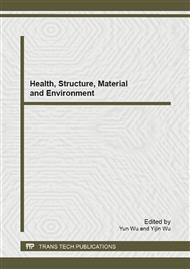p.936
p.941
p.946
p.953
p.958
p.964
p.970
p.977
p.982
New Nitrogen and Phosphorus Removal Process Development Based on Simulation
Abstract:
Nitrogen and phosphorus are the nutrients induced eutrophication, therefore the removal of nitrogen and phosphorus is the main target of domestic wastewater treatment. In order to achieve better nutrient removal effect with lower construction and operation cost, a new nitrogen and phosphorus removal process was developed based on simulation. New process named MUST was developed by mixing UCT and step-feed BNR technology together, and possessed the advantages of two processes. The results of simulation show that MUST can achieve similar treating effect with 20% shorter hydraulic retention time (HRT) compared with UCT process. The influent splitting ratio of 4:3:3 was recommended for MUST operation. A pilot experiment of MUST was also carried out according to simulation results, and achieved very good pollutant remove effect, the average COD, NH4+-N, TN, TP removal efficiency were 85.4%, 94.0%, 65.1%, 62.3% respectively under the condition of low influent COD/TN ratio. Considering the excellent pollutant removal capacity of MUST, an upgrade project chose it as wastewater treatment process. This paper just starts the research of MUST, further study is necessary and valuable.
Info:
Periodical:
Pages:
958-963
Citation:
Online since:
February 2013
Authors:
Keywords:
Price:
Сopyright:
© 2013 Trans Tech Publications Ltd. All Rights Reserved
Share:
Citation:


